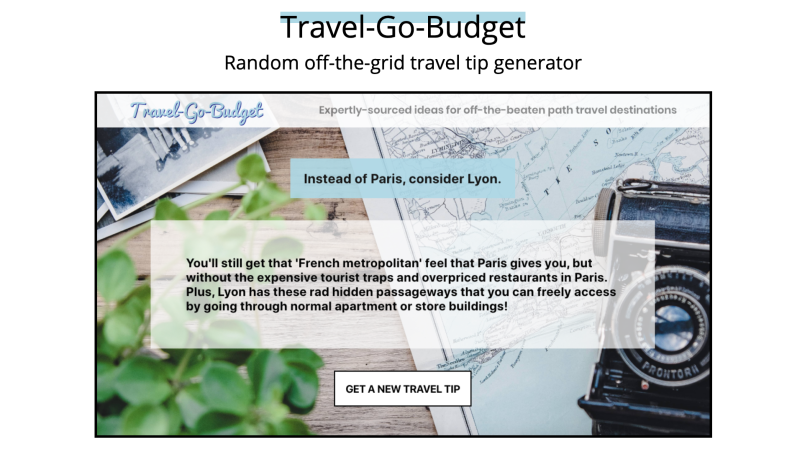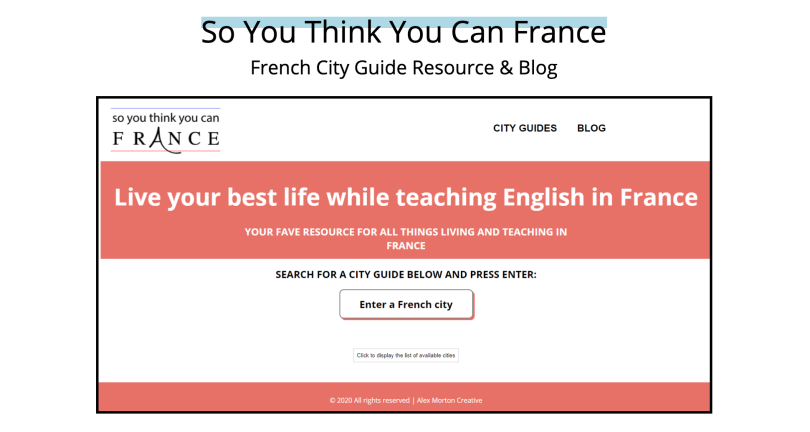When software engineer Alex Morton uploaded her very first project to GitHub in November of 2019, she included a few paragraphs of README documentation.
“This is the first JS/React project I’ve undertaken on my own (i.e. without following along with a tutorial),” she concluded, “And I feel really proud of myself.”
In a way, Morton’s words cut to the heart of the “building in public” phenomenon, which encourages founders and founding developers to share product updates in real time. The idea is that the public gets not just a finished product, but a peek behind the scenes. The approach is said to build brand affinity and audience engagement even before a product is officially released.
But most chatter about building in public focuses on startups and startup culture. Morton wasn’t trying to launch a company — she was teaching herself to code.
For Morton, building in public was an exercise in storytelling — not for potential investors or users, but for potential employers and, perhaps more importantly, for herself.
Morton’s coding journey was entirely self-guided — no college classes, no bootcamp, no set curriculum. Her blog helped motivate her, focus her energy and, ultimately, land her a job as a software developer at the San Francisco-based startup Orbit.

Should I Stay or Should I Code?
Morton discovered her interest in programming while living in France and working in customer support for the budget travel website Scott’s Cheap Flights.
She and her colleagues were encouraged to submit product feature ideas. But no matter how strong her pitches, she couldn’t help with their creation or implementation, and they tended to disappear into the ether. She also noticed a stark gender divide between the customer support and product teams.
“I was with them for about a year and a half, and around about a year with them, I started asking myself: ‘Why are there just men on the engineering and product teams? And why are there all women in customer support?’” she said.
When the company decided to move all its operations to the United States, Morton had a choice to make: move back to the states, or stay in France with her partner and their dog and figure out a new career. She chose to stay.
At first, she submitted a flurry of job applications for technical support roles. It was closer to software development than what she was doing before, she reasoned, if not exactly what she wanted. But soon, she hit a wall.
“I had to kind of have a reckoning with myself and, like, sit myself down and say, ‘If [a technical support job] is taking up the majority of your time and focus, you’re not going to be able to reach that goal of becoming a web developer for a bit longer,” she said.
Morton decided to live off her emergency fund and make learning to code her full-time job.
The Case for No Curriculum
Unlike a college course or bootcamp program, Morton had no official curriculum for her studies. She made a list of what to learn and when, but quickly abandoned it once she started working.
“At the beginning, I had this idea like, ‘OK, I’m gonna study this, learn this, then use this, then do this,’ and then I never ended up doing it, because things change. Your plans change,” she said.
Instead, she decided to toss the set curricula suggestions and follow her muse, as it were. She started spending most of each day working on small projects that aligned with her interests. When she came up against a functionality she didn’t know how to build, she’d spend a few hours taking an online course, reading a textbook or watching a video.
Day by day, she got better. Her goal was to become a front-end web developer, so she used Codecademy to learn HTML and CSS, then moved on to JavaScript and, eventually, React. Her projects progressed from the static web page with a random travel-tip generator to a web app that used an API to fetch comprehensive travel guides from Firebase Firestore in response to users’ search queries.

Why Blog?
“Here it is — the first official post of my self-developed portfolio and blog site! I’m still trying to wrap my head around dynamically rendering blog posts, so, for now, I’m (embarrassingly) statically rendering them within the blog page,” Morton wrote in her very first post a year ago.
From there, she went on to document not just what she built, but why.
In entries six months later, for instance, Morton bounced between matter-of-fact updates on an original app she was building that reminded users to call their loved ones, and more contemplative looks at how learning to code was impacting her everyday life and emotions.
Before learning to code, she wrote, she rushed through daily tasks, frustrated at anything that slowed her down. But coming to terms with the intricacies of programming — and the impossibility of cutting corners — made her feel less impatient in other areas.
“Instead, I’m motivated to keep going with each small action taken — inspired by the results gained with each passing moment,” she wrote. “We may not be able to see the progress at the very instant we take the action, but boy are we proud of ourselves at the end.”
In that way, Morton’s building-in-public approach not only helped her document her progress — it helped her process what she’d already accomplished, set a daily agenda and learn to communicate clearly about software and its human impact.
Over time, Morton noticed that her detailed, narrative READMEs set her apart from many other developers. (It’s worth noting that a lack of helpful documentation is a top complaint surrounding open-source projects.) While her first project on GitHub came with a few paragraphs of explanation and three potential improvements, her most recent README is a comprehensive walkthrough complete with a backstory, live video demo, code snippets and sample in-app screenshots.
“I started thinking: ‘Alright, I’m applying to jobs. I’m sending out my portfolio. They’re going to be looking on GitHub. What do I want them to see? What would I like to see if I were just landing on this?’” she said. “Even in your bio on GitHub, you can set yourself apart. You can be yourself.”
Morton’s New Employer Found Her on Twitter
Ultimately, it was Morton’s blog and corresponding Twitter posts that caught the attention of a software engineer at Orbit, a startup that makes developer tools for community managers.
He sent her a direct message, and they set up a casual meeting. Then, she met with the company’s CTO and CEO. Finally, she did a technical interview — she and her first contact pair programmed a feature for one of the original projects on her blog.
“Eight days later, I had an offer,” she said.
Through the process, Morton never felt like her nontraditional training stigmatized her or held her back.
“I always felt like my background — when I did have interviews — was seen more as an interesting strength and opportunity to share my story and to connect,” she said.
Morton’s self-guided coding education set her apart in two regards. First, by letting personal projects determine what she learned and when, she differentiated herself from self-taught developers who followed one of many “learn to code” roadmaps. Anyone can search “how to become a Google developer” and try their best to check each box, she reasoned. But fewer people would be willing to trust their creative impulses to guide their learning.
“We all have different ideas and different interests and past experiences,” she said. “I was like, if I can make something of that, that could really set me apart and give me something that I’m passionate to talk about during interviews. I could go a few layers deeper than just, ‘Oh, yeah, it’s a to-do list, so I saw that I should probably build that.’”
Second, by documenting each step of her training down to the day and hour, Morton turned what would otherwise be a vague, impersonal process into a story with plot and characters, challenges and payoffs. Her creativity and communication style shone through alongside her coding skills, which ended up grabbing the attention of an employer that valued all of it.
Ultimately, Morton is glad she chose to learn at home and save money rather than going through a bootcamp program (although she believes bootcamps can be a good option — if it works, it works, she added). Like bootcamp attendees, Morton learned how to step into a new language or framework, figure out the basics and iterate from there. Now, in her new role, she’s learning Ruby on Rails.
“My goal was to become a front-end web developer, and out of the blue, I became a junior software engineer [working in] Ruby on Rails,” she said. “You don’t know where it’s going to take you, so being open is definitely going to help.”
Morton reached her goal of becoming a working software developer, but she still has a lot to learn to be able to bring ideas to fruition in Rails. Luckily, that’s the main reason she wanted to become a developer in the first place: She wanted a career that will never plateau. Software, she added, will continue to pose new challenges year after year.
And, of course, she’ll continue to blog about them.
“I feel like I’m at the start of this amazing adventure. And there are so many different avenues to take or doors that can be opened,” Morton said. “I’m here. I’m doing the work every day. I’m in it. And the opportunities are just endless — like that’s how it feels. I’m just excited to get good at Rails.”




